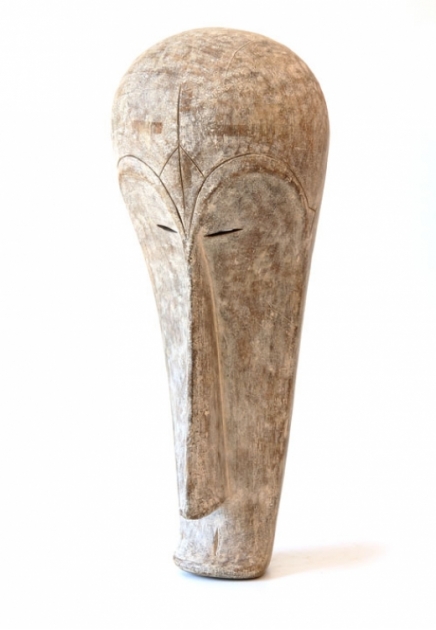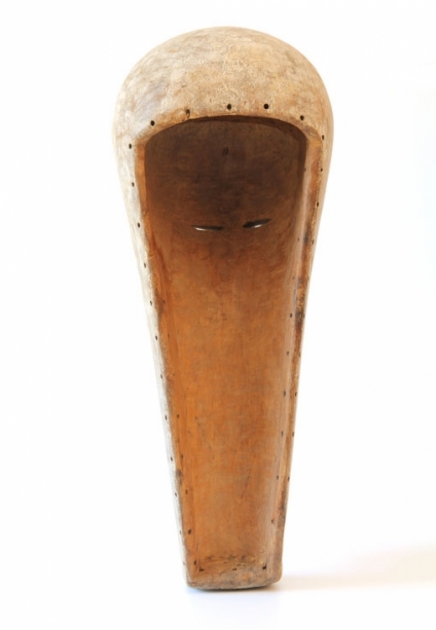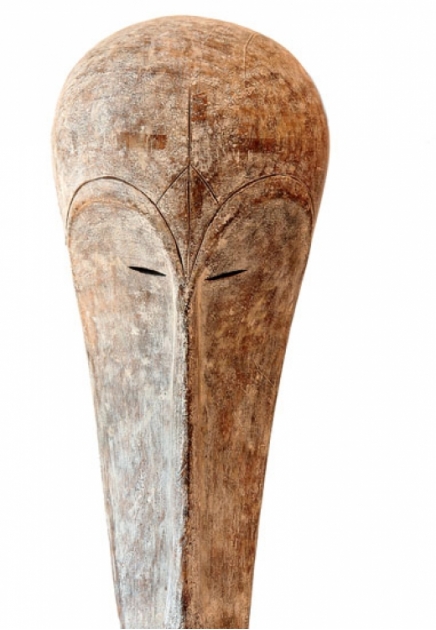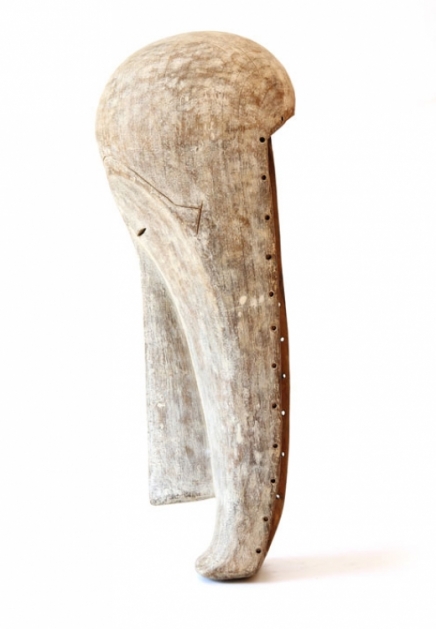Large Ngi mask
The name of the cult was homophonic with the name for gorilla – ngi. This Fang mask is connected with the society known as Ngi (also Ngil) yielding political and judicial powers. Its activity was recognized in all southern parts of Fang territory, among Ntumu, Okak and Betsi. The masters of the Ngi would travel from village to village. The masks themselves, seen without their fiber ruff and without the dancers' costumes made of raffia strips, gave a false impression of serenity. The deliberate anatomical distortion is consistent with the need to personify a terrifying, semi-human being. The mask's job was to confound the sorcerer, hunt down the social deviant, and punish the criminal. The face has traces of white kaolin. The association of the cult with the gorilla is seen however in the fact that an essential part of the ritual was the construction of massive earthen figures, gorilla-like, in the cult precincts (Tessmann). Furthermore, we can conclude that the gorilla was extremely important in Fang life, from J. Fernandez's remark, “that at the akon aba (the house of the council of men) on the main post of the front entrance – a gorilla skull was hung according to Fang custom (Fernandez ibid, p.99). The narrow concave heart-shaped face is contrasted with an enormous convex forehead, forming a sort of helmet which allowed the dancer to set the mask on his head. The plane of the forehead extends to either side of the head and terminates in a flat chin under an incised mouth. A long linear nose broadens slightly at the base. The small horizontal perforation served as severe inquisitorial eyes, seeking sorcerers.
Tessmann, Die Pangwe,1913, Vol.ii, pp. 74-90, cf. in J. Fernandez, Bwiti, an ethnography of religious imagination in Africa, 1982, p 99, p.622;




